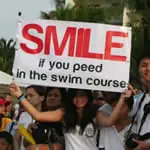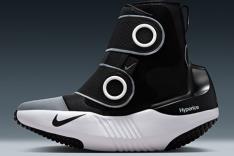
by Matt Dixon, IRONMAN U Master Coach
I should start out by saying that I don't truly believe there is an offseason for endurance athletes. Following the end of your racing season, it's critical that you take a complete break from structure and stress of racing and training, and allow healing.
A break only needs to be a couple of weeks before you can add some structure back into your life and training plan. The key is that this structure should provide a much lower level of physical stress than IRONMAN training, and allow you to make strides toward a great upcoming season while avoiding an accumulation of fatigue. At my coaching company, purplepatch, we refer to this most critical block of work--which much of the next season's success will be built on--as the post season. Let's explore the goals of this phase and your optimal approach to ensuring that it's successful.
The Goal
To keep things simple, we always discuss the post season as a critical phase of training which should prepare your body for the rigors of heavy training ahead. This frames it as a critical preparatory phase and allows the athlete to emphasize planning, technical improvements, equipment changes, as well as careful improvements to foundational fitness and musculoskeletal resilience that will help them absorb and adapt to harder training ahead. Many triathletes seem to only have an on and off switch when it comes to training. This phase should include lower overall physical strain and a much lower physical load.
The Plan
The post season is a perfect time to consider making changes to your approach, even as you are aiming to pursue key training (discussed below). This can include:
1. A commitment to technical improvement.
So often technique and skills acquisition become an afterthought as racing looms. The post season is a great time to refocus on 'doing things right.'
2. Equipment changes.
You don't always need a new bike. After all, we always say 'new bike, same old engine.' This said, any equipment changes or positional refinements best come at this point in the season. Immerse yourself in finding the right bike seat (for you!), the right fit, or ensuring you are in best running shoes for your comfort and run performance.
3. Coaching.
A coach can and should guide you to enhanced performance. There is a high degree of athlete responsibility in any coaching relationship, but a high-quality coach will help you. Now is the time. Ensure you choose carefully, and don't just pick the big name coaches. Find the right fit for your needs and style, as this is going to be a real relationship over the coming months and years. Check out IRONMAN U's new CoachMatch service that will help you land the right coach for you.
The Focus
Training shouldn't accumulate to be overly demanding during this phase, but it doesn't make it any less critical to overall development. Focus on these key areas:
1. Set up the chassis.
Our running training is aimed at some technical improvements, as well as a careful strengthening of the musculoskeletal system (tendons, ligaments, muscles) to set up the ability to withstand a heavier load in the next block. Much of the running is shorter in duration and applied frequently.
2. Make a commitment to swimming.
Our sport is swim-bike-run, not swimming, cycling and running. Swim fitness and resilience is critical; don't delay on your 'winter' swimming project. I like athletes to be swim-fit, and we place a great emphasis on swimming development in the post season and beyond. Find a group, focus on some technical work, and fall in love with swimming.
3. Get strong.
Strength and conditioning is a season-long endeavor for endurance athletes, not a short-term fix. With this, it is not as central as our swim-bike-run sessions. Set the next season off well by integrating an efficient but specific focus on strength and conditioning training. Sessions should be short (under 45 minutes), specific, and ready to progress in focus throughout the season. A smart coach should absolutely assist you with this component.
4. Building block work.
For busy triathletes, keeping all intensity low in this part of the season is a wasted opportunity. Incorporate some very high-intensity intervals to develop neurological conditioning, coordination, and power potential. Short and fast hill repeats with a lot of rest, short fartlek foot speed intervals and other speed work is key. Know that the aim is not to break you, but for you to complete them with great form and real purpose. No session should leave you depleted or destroyed. We call it 'technical speed' to place emphasis on effort with great form.
- 1
- of
- 2
About the Author









Discuss This Article